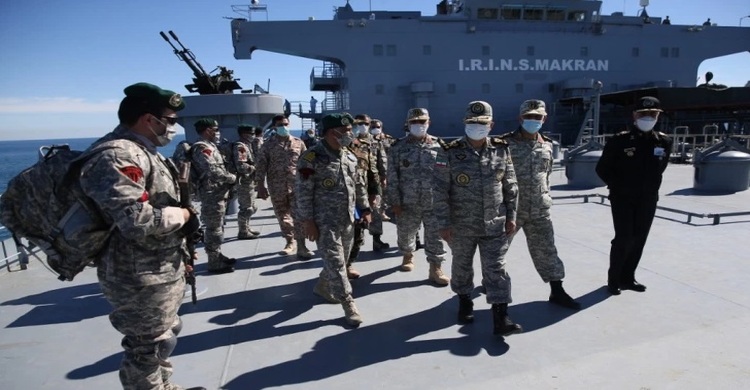Iran unveils its largest military vessel during missile drill

Iran’s navy has officially inducted the country’s largest military vessel into its fleet during a maritime missile drill at a time of heightened tensions with the United States over its nuclear programme.
The indigenously-made forward base ship IRIS Makran, which is said to be able to carry up to five helicopters, joined the fleet with another ship that is capable of firing missiles.
The 228-metre (748-foot) long warship, previously an oil tanker, has been repurposed to provide logistical support, carry out search and rescue missions, deploy special forces, replenish and transport supplies, offer medical assistance, and act as a base for fast boats.
They will fire surface-to-surface cruise missiles in the sea, test out missiles from submarines, conduct special forces operations, and deploy unmanned aerial vehicles as part of the two-day drill being conducted in the Sea of Oman.
“By organising this drill we can evaluate our ability to respond to potential threats from the enemy in a timely manner and improve our performance through addressing weaknesses and boosting strengths,” said Admiral Hamzeh Ali Kaviani, who acted as the spokesman for the drill.
The US and its regional allies, particularly Saudi Arabia and Israel, see Iran’s missile programme as a security threat with fears that Tehran might use its long-range missiles to carry nuclear warheads.
Iran’s army also held its first-ever drone drill in early January, in which it showcased and tested hundreds of locally-made unmanned aerial vehicles (UAVs).
Last week, the Islamic Revolutionary Guard Corps unveiled a huge underground missile base along the Persian Gulf coast, which it said was one of “many” such bases.
The military show of strength comes amid continued tensions with the US days before the hawkish President Donald Trump is set to leave the White House.
Tensions have been high since 2018 when Trump walked out of the 2015 nuclear deal, which put a curb on Tehran’s nuclear programme. Since then the US has announced harsh sanctions crippling Iran’s economy.
The Trump administration has flown nuclear-capable strategic bombers to the Middle East four times in the past two months and sent its navy aircraft carrier in the region, prompting Iran to warn Washington against finding a pretext for war.
Earlier this month, Iran told the UN nuclear watchdog that it planned to enrich uranium to up to 20 percent purity, drawing a sharp reaction from the European Union – one of the signatories of the nuclear deal.
Source: Al Jazeera

